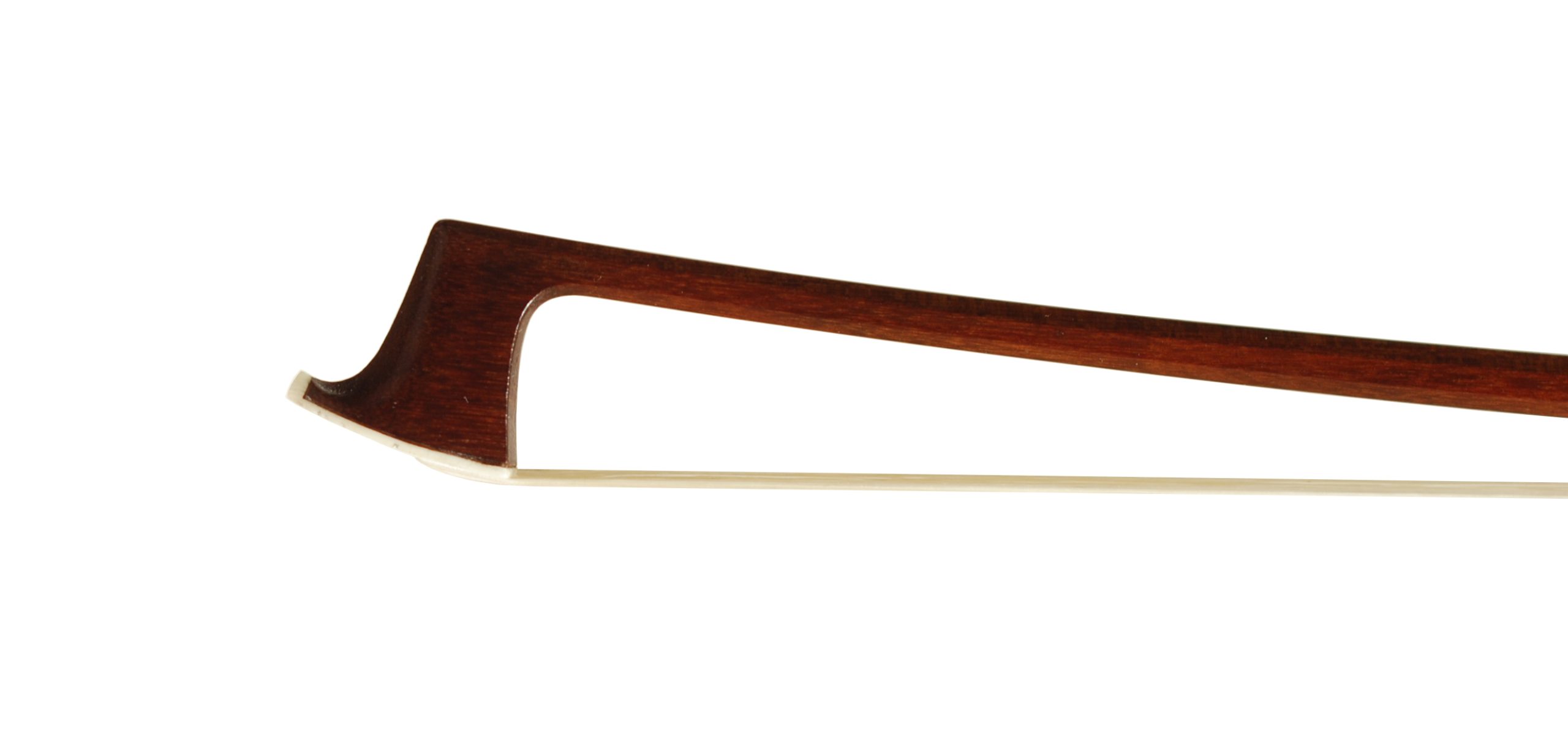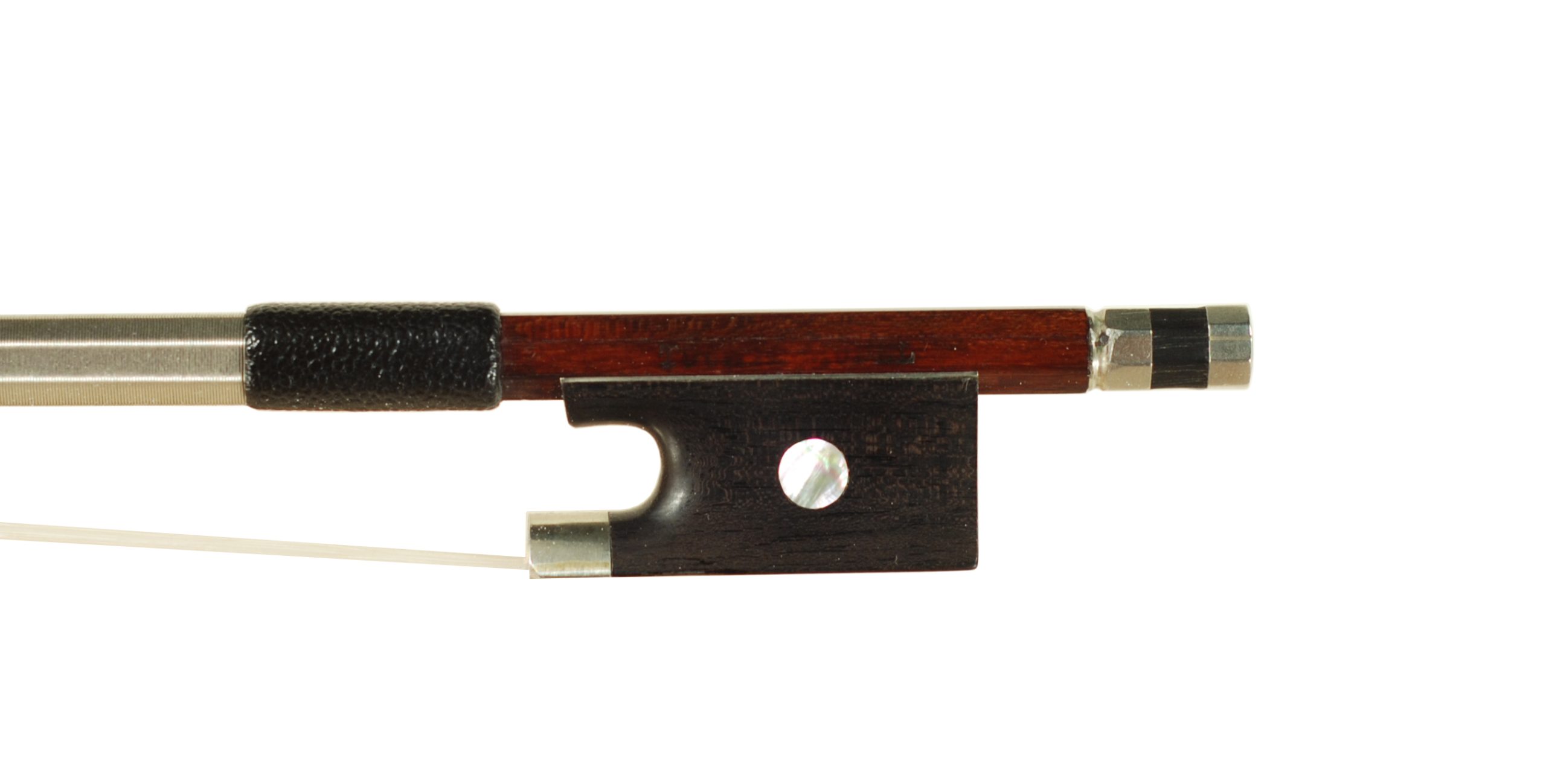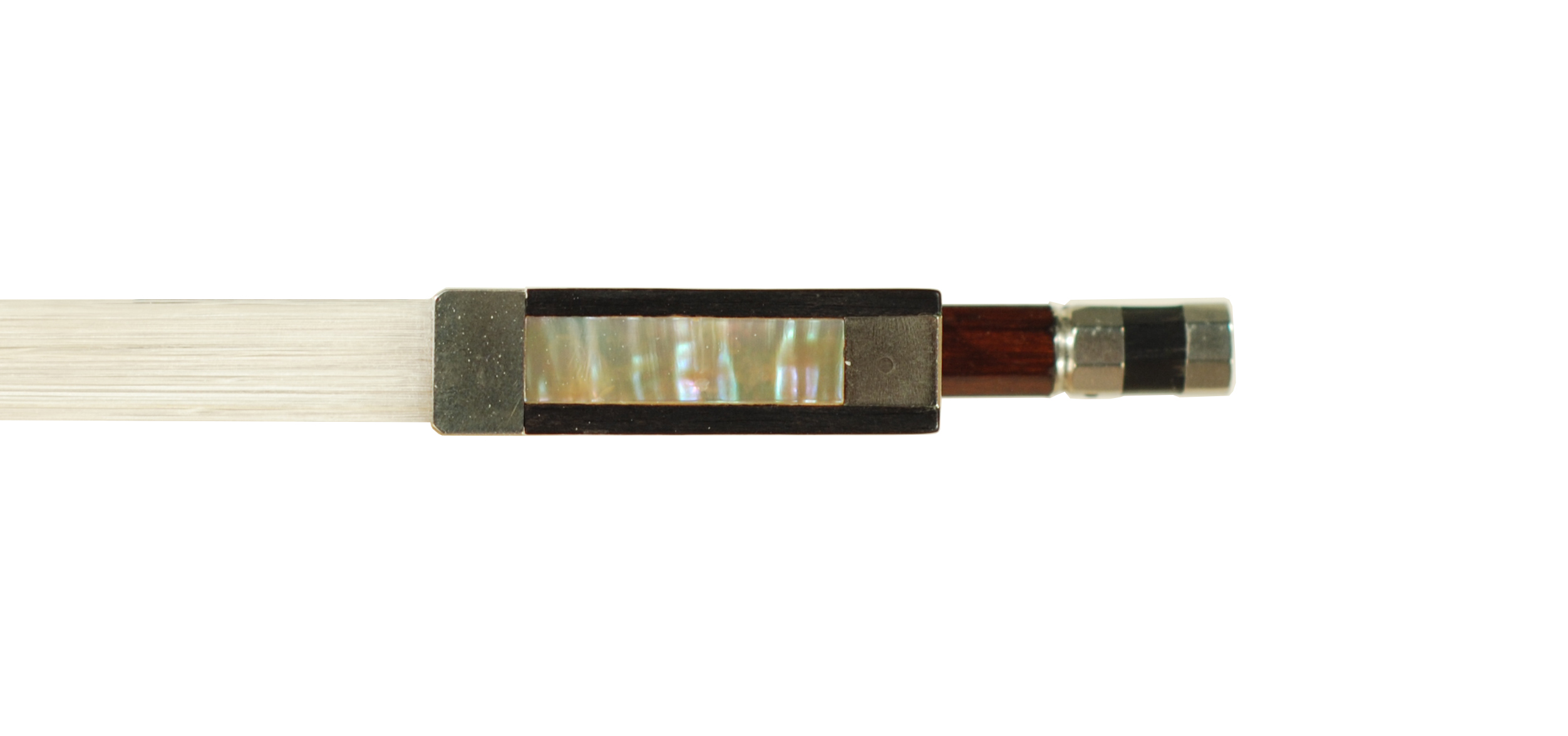Tourte Model Pernambuco Violin Bow Markneukirchen/Saxony circa 1900-1920
$1,200.00

Stamped:
In Europe, especially France and Germany, bow making was a patriarchal or family craft, and to some extent still remains so today. There was a deference to the master, which in many cases was a father, uncle, or grandfather, or to another highly respected workshop member. Just like myself, youths trained as apprentices, then became journeyman, before even being considered a master or ready to take a making exam. In some cases, the journeyman stage was shortened if their abilities were remarkable enough and their bows sought after by famous players. Most makers started as children in the family workshop and were already highly trained by the time they were teenagers. As a maker and violin shop owner I have seen young people today, mostly those that are playing well, at some point just take off. They can develop quickly as good players within 5-6 years in their early teen years. They grow in their technical abilities as well as artistically, especially if inspired by a phenomenal teacher, mentor, or parent. I got totally into carving as a young guy because of my father, who was so into birds, song birds, and birds of prey. He had trained himself to learn hundreds of calls and carved these same birds at a high level. I believe the Lord called me into the violin trade because of my family too. My grandmother being a serious violin player, my dad being a teacher and bird carver, and I grew up close to a German violin maker. All of these influences helped shape me and developed me into owning and working in a violin shop. I have a passion for the violin trade and the work has been more than fun, now in my 37th year as a shop owner.
If you’re passionate about playing check out this older stick, it might just be the tool that makes your instrument jump with a sound you love. The bow is pernambuco, octagonal in section, and nickel mounted. This older bow has a lighter gram weight, making it easy to hold and handle. The pernambuco is an older specimen of wood. It has a nice sheen and is a dark red/brown color harvested in the early-to-mid-1800’s, then transported to Europe. The pernambuco would have been sliced up into long blocks and stacked in a building or barn for 15-20 years to air dry. Then the maker would have selected the piece and began working, shaping it into a stick. The ebony frog block coming from another country of origin would have a similar story. The frog is mounted in nickel silver with the linings and the one-piece heel pinned as the mounting to the ebony. It has single mother-of-pearl eyes and a three-piece button. The frog is petite in its makeup and the bottom ferrule portion of the frog protrudes out farther than the top portion of the throat. The winding and leather thumb grip were worn out – a good sign that this bow was played a lot. The bow was given a nickel winding and leather thumb grip and two new mother-of-pearl eyes. Before the nickel winding replacement I gave the bow a good cleaning and just oiled the stick. A great bow ready for another home.
Weight fully haired 57.3 grams






